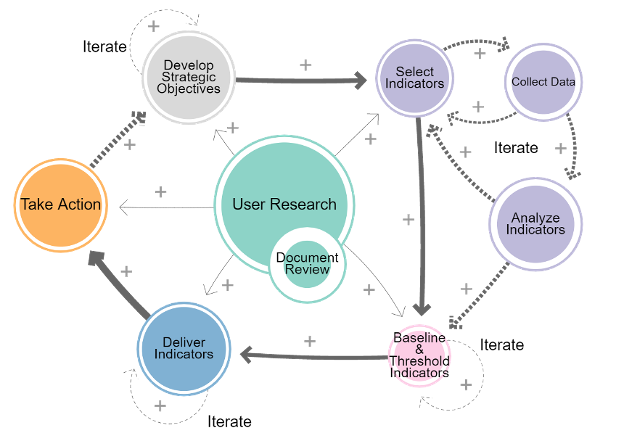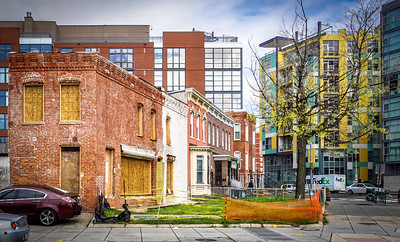Iterative Design Methodology
A “design thinking” approach to social problem solving focuses on carefully designing effective solutions to meet human needs. Using design thinking, SJP developed a methodology for our partner, DC ORE, to select racial equity indicators. Our methodology starts with research as the foundation informing all other activities. Research insights from D.C. residents determine strategic objectives for racial equity, which in turn shape which indicators we or our partner select and how we present them. Once selected, indicators are to guide the policies and programs D.C. government will create to improve racial equity, and measure whether those policies and programs achieve strategic objectives. Each step in the methodology is iterative, meaning steps repeat more than once for ongoing improvement. As D.C. residents provide new or deeper insights, and as the city progresses toward racial equity outcomes, DC ORE can use new information to refine indicators.





